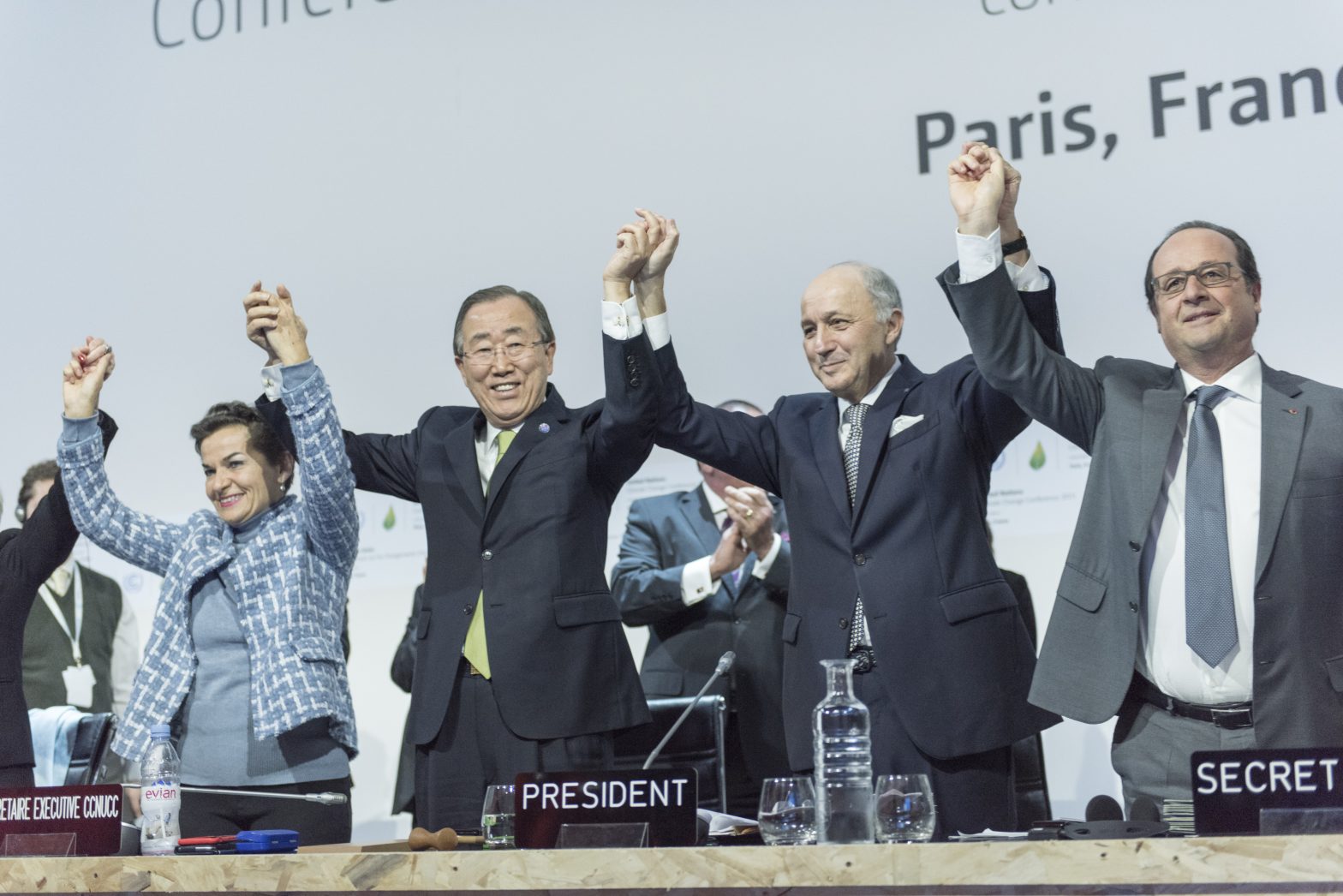
Photo: UN-b
City leaders demand more financial support on climate change
28 January 2016
by Jonathan Andrews
With 185 countries having submitted Intended Nationally Determined Contributions, and 195 countries adopting the Paris Agreement from COP21, Jonathan Andrews asked a select panel what the agreement means for cities
What are your thoughts on the COP21 agreement?
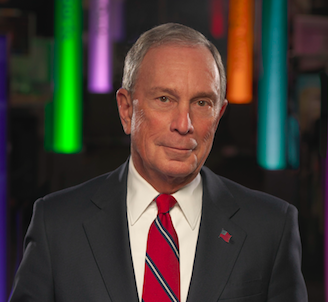 Michael Bloomberg, UN Secretary-General’s Special Envoy for Cities and Climate Change
Michael Bloomberg, UN Secretary-General’s Special Envoy for Cities and Climate Change
The global climate agreement reached in Paris was a big step forward. The agreement shows that nations are ready and willing to cooperate in the battle against climate change. Together with the commitments made by cities and businesses, the Paris agreement also sends a clear signal to the world’s financial markets, which will help spur greater private sector investment in low-carbon technology and infrastructure.
That said, COP21 was a mid-term, not a final exam. While the agreement creates a framework for how the world can meet the challenge of climate change, the hard work is still ahead.
 Mark Watts, Executive Director, C40 Cities Climate Leadership Group
Mark Watts, Executive Director, C40 Cities Climate Leadership Group
The agreement is a major breakthrough. It is incredible to gain the consensus of so many countries on anything, but to gain such a positive agreement on climate change was immense. The aspiration to limit temperature rise to 1.5 degrees Celsius was particularly welcome. But of course the independent national commitments come nowhere near to what is needed to achieve that target, and the enforcement mechanisms of the agreement itself are weak and don’t come into force until 2020. That is why the role of cities and other non-state actors is so significant. Mayors in power now are critical to getting the world onto a low carbon pathway. Fortunately, cities are ramping up action already, we reported 10,000 individual climate actions taken by C40 cities since the Copenhagen climate talks in 2009, demonstrating the speed with which cities are moving.
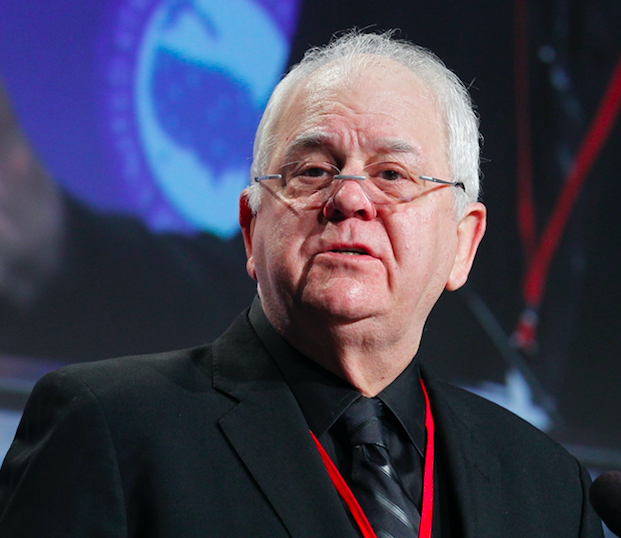 Tom Cochran, CEO and Executive Director, US Conference of Mayors
Tom Cochran, CEO and Executive Director, US Conference of Mayors
America’s mayors have been advocating for an agreement like this one for the last several years. In 2005, when the Kyoto Protocol went into effect for 141 nations and the US wasn’t one of them, we gathered 141 US cities to agree to similar targets in the US Mayors Climate Protection Agreement. Since then, we’ve had over 1,000 mayors sign in the US, and our agreement has been the model for others like it around the world.
When we went to Copenhagen for COP 15 in 2009, we were discouraged that local leaders were doing so much more on climate change than national leaders. So it was heartening to see our national leaders finally match the actions of mayors around the world.
 Anna Lisa Boni, Secretary General, EUROCITIES
Anna Lisa Boni, Secretary General, EUROCITIES
It is a positive step, paving the way for a low-carbon future. I am very pleased to see local and subnational actors explicitly recognised as part of the agreement. And I welcome the proposal to revisit our progress every five years to ensure we are all on track. But this is just the start: we have an agreement, and now everyone must act on it and follow up seriously on their commitments.
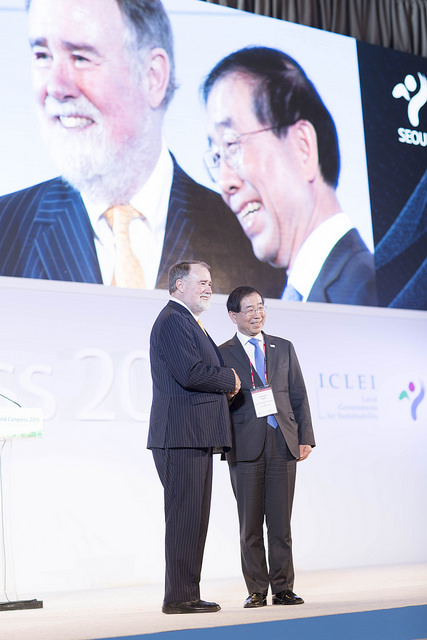 Monika Zimmermann, Deputy Secretary General, ICLEI
Monika Zimmermann, Deputy Secretary General, ICLEI
This concludes efforts since 2007 to build a new climate regime, showing that all countries acknowledge the threat of global warming and are committed to climate action. The inclusive nature of the agreement that refers to Non-Party Stakeholders is also a very positive sign in that it particularly engages local and subnational governments in advancing climate goals. By affirming engagement with all levels of government, the agreement strengthens the global coalition that has resolved to build a climate-safe and resilient future.
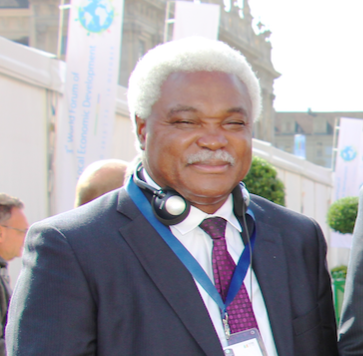 Jean-Pierre Elong Mbassi, Secretary General, UCLG Africa
Jean-Pierre Elong Mbassi, Secretary General, UCLG Africa
For the first time all nation-states accepted that they face a common threat from global warming, and agreed that every effort should be made to maintain global warming below 2 degrees Celsius. However, the fact that the agreement does not have binding provisions can be seen as a weakness. The ‘name and shame’ principle in the agreement supposes that proper monitoring and evaluation mechanisms are in place that can deliver neutral advice. Reliance on evaluation by experts of voluntary country reports will certainly not be enough to know exactly which countries are enforcing the agreement. The ‘name and shame’ principle further supposes that civil society would play a greater role. It is striking that despite the critical role expected from them, civil society organisations were not really party to the COP21 talks
 Rafael Tuts, Coordinator, Urban Planning and Design Branch, UN-Habitat
Rafael Tuts, Coordinator, Urban Planning and Design Branch, UN-Habitat
The Paris Agreement is very pragmatic and provides a sound framework for long-term climate stabilisation. It is very different from any other multilateral environmental agreement because it allows for incrementally increasing ambition and builds on nationally determined contributions to reach a global target.
In what areas could the agreement do more?
Bloomberg
The commitments nations made to reduce carbon emissions still aren’t enough to prevent some of the worst impacts of climate change. However, the agreement includes regular re-evaluations of national goals and transparent reporting of progress, a feature that city leaders strongly advocated. Those two features will make it possible to address areas where more needs to be done and continue raising the bar as technology improves.
Watts
I would have liked to have seen even more in the agreement about how nation states will support and enable city governments. Historically, almost none of the many international green funds have been allowed to provide finance directly to cities. In Paris we launched the C40 City Finance Facility with backing from the German government and the Inter-American Development Bank, to help overcome this obstacle. Our calculation is that just US$20 million of grant funding to cities could unlock US$1 billion of low-carbon infrastructure investment in cities.
Cochran
As with the Kyoto Protocol, it will be difficult for the executive branch to get approval of this agreement from Congress. When the US president was first inaugurated in 2009, An Inconvenient Truth [the documentary by former Vice-President, Al Gore] was still on everyone’s mind, and there was some hope that Congress would finally act on climate change and commit to substantive emissions reductions. But that’s no longer the case. Now it’s hard to get a lot of people in the US to even admit that climate change is real and that it’s human-made. So it could be very difficult for this agreement to get through Congress.
Boni
While national governments have committed to actions to keep global warming under 1.5 degrees Celsius, there is no legal obligation for them to meet these commitments, and at present we are still on course for a far higher rise in temperature. And it is also important to stress that we need to take action now, even though the agreement only sets out commitments from 2020.
Zimmermann
Unlike Agenda 21 in Rio in 1992 or the Kyoto Protocol in 1997, the Paris Agreement was agreed and adopted but national governments have not signed it yet. Therefore, the first milestone is the number and diversity of Parties / Heads of States to sign the Paris Agreement on 22 April 2016, wisely scheduled to coincide with Earth Day celebrations. The second milestone is the institutional framework and its governance. In particular, this refers to coordination of the technical examination processes, Lima-Paris Action Agenda Outcomes, as well as the performance of the Champions that will be appointed by the COP Presidencies, who will be expected to facilitate the acceleration of climate action and the raising of climate ambition, particularly in the pre-2020 period. This also includes the role and mission of the new leaders–the UN Secretary General, UNEP Executive Director and UNFCCC Executive Secretary–who will all be replaced in 2016.
Mbassi
This is the kind of issue where a multi-stakeholder approach is key. An organised and structured quadripartite dialogue between national governments, local authorities, the private sector and civil society at all levels (subnational, national, regional and global) would have been the best way to prepare the negotiations at COP21. We are hopeful that this approach will be adopted for the COP22 in Marrakesh in November 2016, which focuses specifically on the means of implementation of the COP21 Agreement.
By signing the Paris Declaration at the Climate Summit for Local Leaders held alongside COP21, more than 600 cities will set targets to cut urban emissions in half. Was this the COP where cities became not just a side event but took the limelight away from nation-states?
Bloomberg
COP21 was the first time nations recognised cities as full partners in the effort to confront climate change, and that is a big reason why the summit was successful. National leaders were able to reach an ambitious agreement because they could see how much progress cities are making and how eager they are to do more.
Watts
The Climate Summit for Local Leaders, hosted at Paris City Hall by Anne Hidalgo, Mayor of Paris and Michael Bloomberg, UN Secretary General’s Special Envoy for Cities and Climate Change, was one of the most inspiring events I have participated in. Mayors spoke with eloquence and knowledge about climate issues, joking about ‘stealing’ each other’s ideas and being in healthy competition to be the greenest. There is no doubt that city leaders have a major role to play in defining what the road from Paris looks like.
Mbassi
Unfortunately, despite their unavoidable role in the climate change agenda, and the general recognition that no real progress would be made in curbing global warming if cities and local governments were not considered on the frontline of this battle, local leaders continue to voice their case outside the negotiating rooms. The Climate Summit for Local Leaders was considered as a side event and was not part of the official proceedings of COP21. So there is still a long way to go before the UN can translate into practice the first sentence of its Founding Declaration: “We the people of the world…”
Tuts
It is striking to see how the visibility of the topic of ‘cities and climate change’ has increased between Copenhagen and Paris. Six years ago, we were struggling to make the voice of cities heard in climate change forums. At COP21 there was unprecedented room to debate the potential of cities and sustainable urbanisation to cut emissions and build climate resilience. More than 90 side events focused on urban and subnational action. The grand summit at the Paris City Hall generated much media attention, but nation-states remain firmly in control in setting the legislative framework to stimulate climate change action.
There still remains a gap between implementing mitigation and adaptation actions especially in developing cities. Does more action need to be taken on adaptation?
Watts
Yes, and that is very much what our city members are telling us. In order to take effective action on adaptation, cities need to first understand the climate risks they face and the adaptation options available to them. With support from Bloomberg Philanthropies, C40 and Arup are developing The Climate Risk and Adaptation Framework and Taxonomy (CRAFT) Framework as a critical component of the Compact of Mayors. CRAFT establishes a clear and concise lexicon of the climate hazards that cities face today, and documents how those hazards may change in the future, creating a common language for cities to discuss climate change adaptation.
Boni
While we are doing our best to limit climate change, we still need to act now to make our territories more resilient to its inevitable impacts. Our cities are particularly vulnerable, as centres of dense population and infrastructure, so it is essential to prepare now. Initiatives such as the New Integrated Covenant of Mayors on Climate and Energy, which addresses both mitigation and adaptation and has recently been extended to cover local authorities around the world–not just in Europe–are valuable tools for supporting and accelerating cities’ efforts in this field.
Zimmermann
ICLEI advocates that US$35 billion per year be dedicated to adaptation needs in communities across the world via grant-based provisions for developing countries. In addition to public grants and loans, we encourage local governments to focus on providing frameworks for private investments, including these of citizens and small local business. No responsible city development can be done today without checking each investment against adaptation needs.
Tuts
More needs to be done on adaptation. This will be easier as climate impacts are now becoming more visible with every passing day. The Green Climate Fund aims for a 50:50 distribution of funds to address mitigation and adaptation, which will no doubt redress the current unbalanced funding pattern.

The COP21 agreement outlines that, globally, US$100 billion a year needs to be spent to pursue the targets with most of the costs being associated with greening infrastructure and mitigation and adaptation efforts in urban areas. Is finance the next battle for cities and where will the funds come from?
Bloomberg
It’s an important issue but remember the private sector has a strong interest in helping cities avoid the impacts of climate change because cities are where most of the world’s businesses are located. The risks cities face threaten those businesses as well. The private sector also has a strong profit incentive to get involved. The key is for governments to remove barriers that stop cities from accessing capital markets (many cities, for instance, lack bond ratings) and that stop businesses from making investments.
Watts
If cities, particularly those in the Global South, are to continue leading the way on climate action they have to be supported with the proper financing. C40 has identified 2,300 high-impact, readily deliverable actions that could save a massive 450 MtCO2 by 2020, equivalent to the annual emissions of the United Kingdom, and could be unlocked with just US$6.8 billion.
Cochran
Whoever the next President of the United States is, that person needs to prioritise financing a green infrastructure for America’s cities and metro areas. In Iowa, we released our 2016 Mayors Compact for a Better America, which is a 16-point call to action for the presidential candidates based on the idea of ‘invest and protect’. In that Compact, we call on the next president to expand clean energy use to grow the economy and protect the climate and environment, as well as urbanise the Department of Energy.
Zimmermann
ICLEI and partners aim to support cities in the realm of climate finance through the Transformative Actions Program (TAP), a multiyear initiative that contributes to the development of new financing mechanisms and helps eliminate hurdles in access to climate finance. The already high level of participation in the first year of the TAP shows that cities have ambitious projects that are ready to be implemented and scaled up. Direct loans from funding agencies have proven to be effective in some cases, while local bonds, green bonds and new forms of public-private partnerships will help cities to pursue their sustainability initiatives.
Mbassi
There is a lot of hope in this ‘climate justice fund’ of US$100 billion a year, however, past experience with climate finance shows that there is a huge difference between pledges and effective money in the cashbox. Also, accessing climate finance has been very difficult for local authorities because of discriminatory and complicated procedures. Local authorities hope that there will be a window for their direct access to this fund. We should take advantage of the period of time that separates us from the entry in force of the fund in 2020 to define appropriate mechanisms that would ensure effective access and use of this fund for mitigation and adaptation initiatives at local and regional levels.
Tuts
Assuming all the pledges are turning into cash, the US$100 billion is a good start, but the needs are much greater. Cities will need to use a wide array of public and private instruments to finance climate action. Much of the resources will have to come from private sector investment in renewables and in climate resilient infrastructure. Currently there are many bottlenecks that prevent cities from accessing climate finance, such as restrictions to multilateral loans, the difficulty of bundling climate actions within and across cities, the complexity of procedures and the serious capacity gaps at the local government level, particularly in intermediate cities in developing countries. The work of the City Climate Finance Leadership Alliance is aimed at removing some of these bottlenecks.
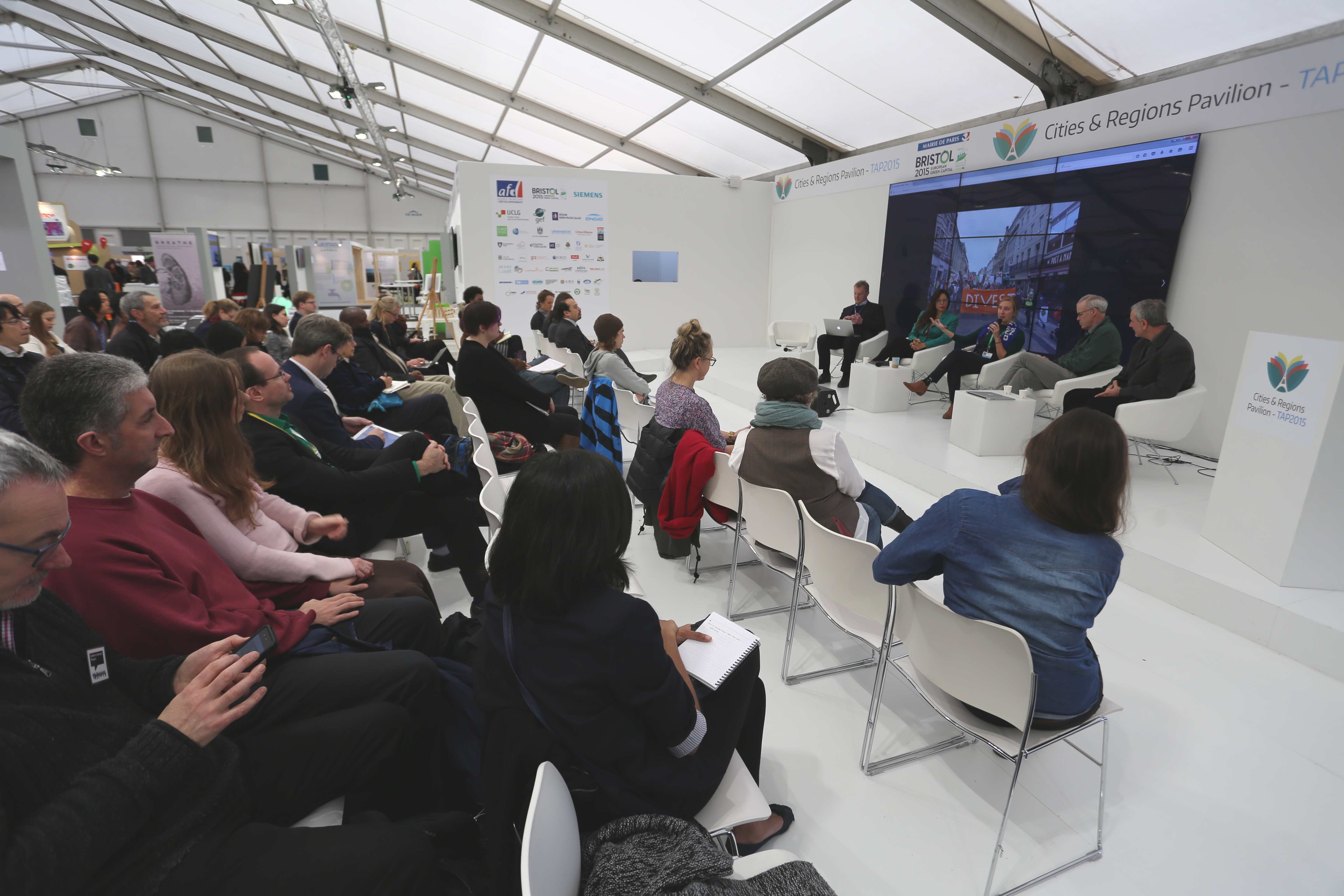
According to C40 nearly three-quarters of challenges cities face when trying to take effective action on climate change require collaboration with national governments, the private sector and others. What can be done to develop and improve these relationships?
Bloomberg
It’s only natural that challenges will arise but the more that cities work together and share best practices–and as national governments increasingly accept cities as partners on climate change–the more success cities will find.
Transparency is also important to cooperation, so all sides can see what the others are doing. The more transparent cities are, the more national governments will follow their lead. And the better data we have about climate risks–and climate progress–the more opportunities there will be for cities, businesses, and national governments to work together. That’s why I’m part of a group called Risky Business, which is working to help industries better understand the climate risks they face. I’m also part of a new Task Force on Climate-Related Financial Disclosures, which will help businesses measure and report the risks they face in a standardised way.
Watts
Because we understand the challenges, C40 can continue to support mayors and cities to collaborate, share the ideas that work and learn from those that don’t. For example, in May 2015 city members of the C40 Low Emission Vehicles Network collectively forged an international Declaration on Clean Buses. By the time London hosted the first ever global Clean Bus Summit in June 2015, bus manufacturers were keen to attend the event and support cities in delivering fleets of new low-emission buses, not least because of the collective purchasing power of the 24 plus cities in attendance. Mayor Boris Johnson told the C40 Forum that London was already benefiting from a 10 percent reduction in the price of hybrid electric buses.
Cochran
We have a good relationship with the private sector on the issue of climate change. Our partners in the private sector recognise that if they are going to be successful in our cities, then we all need to adapt together. Walmart has sponsored our Mayors Climate Protection Awards for ten years now, and we’re incredibly proud of that partnership, which not only highlights local action but also helps to fund it. We were also grateful that Philips and Comcast NBCUniversal contributed to our efforts in Paris, sponsoring the event we held at Ambassador Hartley’s residence.
With the federal government, the biggest challenge we still have to overcome is getting people to acknowledge that climate change is real and man-made. We’re lucky that this administration does try on climate, but there are people in both houses of Congress and several candidates for president who say publicly that climate change is a hoax. That makes it difficult to pursue an aggressive federal partnership on climate.
Boni
National regulatory and taxation frameworks can support cities by removing harmful subsidies, such as for fossil fuels, and providing incentives for renewables, energy efficiency in buildings and urban transport. Legislators at national or, in our case, the EU level, can put into place supportive regulation as well. It is important to recognise that these relationships are mutually beneficial.
Working with the private sector is a useful way of accelerating action and ensuring that solutions fit the needs on the ground. The European public-private partnership on energy efficient buildings is a good example of this kind of cooperation, helping to develop affordable breakthrough technologies and solutions at building and district scale, facilitating the road towards future smart cities.
Mbassi
Working with civil society and the private sector forms part of the DNA of local authorities. What needs to be done is to create an enabling environment at the national and upper levels of public governance to allow more such multi-stakeholder engagements. What is also needed is an internationally agreed mechanism of surveillance to avoid abuse of dominant situations, particularly by multinational companies, whose bargaining powers can be far stronger than some of the nation-states of the developing world, not to mention their local and regional governments.
Looking ahead what are your next steps to help cities put action in place to keep global warming capped at 1.5 degrees?
Bloomberg
The more national governments empower cities to act, the more they will. Some cities need greater flexibility to manage their infrastructure, particularly energy and transport. Some need greater access to global credit markets. Others need greater freedom from regulations. And cities around the world need energy subsidies to be redirected away from coal and other dirty burning sources to clean energy and modern infrastructure. The best way to encourage national governments to take these steps is for cities to continue working together, acting boldly, and leading by example.
Watts
A particular priority for C40 will be to seek new investors for the Cities Finance Facility to deliver even more funding for green infrastructure. No mayor or civic leader should be forced to abandon a viable green project, because of a shortage of expertise to help them secure the funding needed to make the project succeed.
Cochran
Between them, the 1,400 cities of the United States have the innovative spirit and ideas to address these problems. Through the US Conference of Mayors Climate Protection Center, the largest mayoral climate centre in the world, we’ll keep providing them with venues to share best practices with each other. These include our Energy Independence and Climate Protection Task Force, our Mayors Climate Protection Awards, and the surveys we issue from time to time. We’ll also keep up our efforts at the federal level to get mayors the resources they need to cap global warming at 1.5 degrees Celsius.
Boni
At EUROCITIES, we will continue advocating for a supportive EU legislative framework and funding for cities, and we will keep on exchanging good city practices on climate mitigation and adaptation. Many cities have set themselves ambitious targets–often more ambitious than their national governments–such as Ghent’s [Belgium] aim to become climate neutral by 2050, and Malmo’s [Sweden] goal of ensuring that 30 percent of all journeys in the city are made by bike by 2030. But while ambition is high, cities need resources to make these happen. European and international funding sources must be made easily available for cities, and national frameworks must allow cities the flexibility to design the policies that work for their citizens.
Zimmermann
We need a three-part strategy. First, we need to raise ambition and accelerate trendsetting actions in all parts of the world. For the first, mobilising commitments and demonstrating compliance with the Compact of Mayors will be instrumental. The latter could be built on the success of the first phase of the Transformative Actions Program (TAP). In 2015, the TAP received 125 submissions from 88 cities in 42 countries, demonstrating that cities are ready to act now. The second part focuses on mainstreaming. We need national frameworks for all cities in each country that give priority and benefits to climate compatible planning and decisions. Third, we need to further shape the global climate regime to encourage and reward nations and their cities as they advance on mitigation and adaptation. The set of instruments has to be further sharpened to ensure that economic prosperity is based on climate friendliness and not on exploitative conditions.
Mbassi
Cities and regions of the developing world are conscious that they cannot replicate the unsustainable models of development followed by their counterparts from developed countries that put the world at risk with global warming. It is therefore time for all of us to join hands and find a more sustainable and low-carbon way of development. The world has enough knowledge to come up with the most appropriate solution–provided the spirit of oneness shown at COP21 prevails. UCLG Africa will do its utmost bit for cities and regions at least in Africa if not in all regions of the world, to keep the COP21 momentum of cooperation alive, and to work towards more solidarity and less zero-sum fierce competition between them.
Tuts
There is a need to expand the scale and pace of what cities are already doing such as shifting transport modes, converting solid waste to energy and reducing heating and cooling needs. In addition, where allowed, cities could engage in renewable energy generation, to ensure energy security and deeper emission cuts. The upcoming Habitat III conference in Quito in October 2016 will provide an opportunity to further operationalise the Paris Agreement through the New Urban Agenda.











